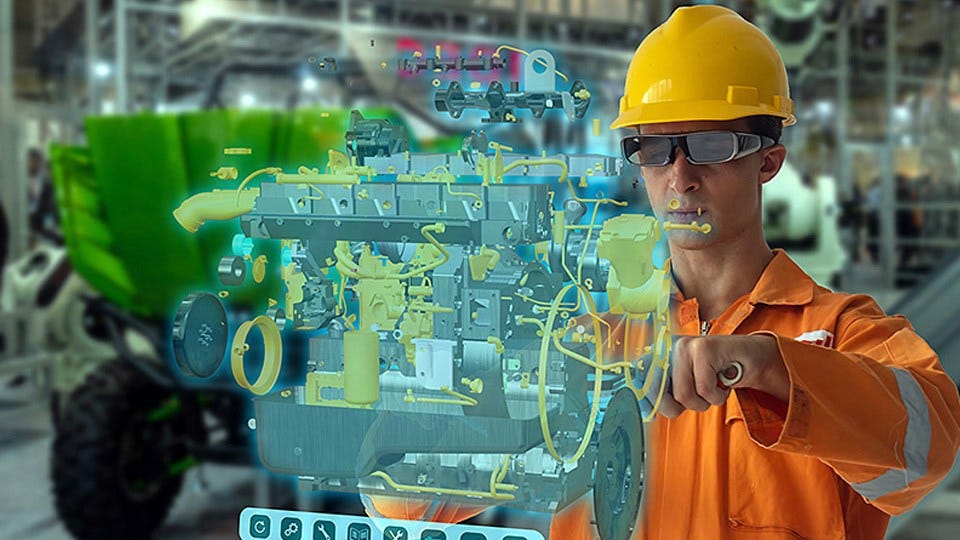Purdue Exploring Augmented Reality for Workforce Training
 A prototype system to provide workplace training using augmented reality is under development at Purdue University with support from the National Science Foundation (photo courtesy of Purdue University/Jared Pike)
A prototype system to provide workplace training using augmented reality is under development at Purdue University with support from the National Science Foundation (photo courtesy of Purdue University/Jared Pike)
Subscriber Benefit
As a subscriber you can listen to articles at work, in the car, or while you work out. Subscribe NowA Purdue University team has entered into a $5 million cooperative agreement with the National Science Foundation to create an augmented and virtual reality experience prototype called Skill-XR. The university says the technology can be used to train workers and help close the skills gap within the manufacturing industry.
Purdue says some manufacturers are turning to technologies like augmented and virtual reality to train workers on new skills. The university says newly-hired factory workers can wear augmented reality glasses to train them on equipment as well as see graphics overlaid on the machine.
“The skills gap in hands-on trades and emerging technology is real,” said Karthik Ramani, professor in mechanical engineering and principal investigator for the project. “Today, one of the best ways to transfer hands-on skills is through the traditional one-on-one apprenticeship model. However, it is costly and not scalable. You lose both the trainer and trainee. Also, older workers are retiring, and it’s difficult to recruit younger workers to replace them. And when they are hired, it is challenging to transfer those skills and knowledge to the next generation. The skills themselves are also changing, complicating the landscape. Skill-XR is all about boosting that skill transfer in a timely manner and enabling it to happen anywhere at any scale.”
Purdue says the “X” in “Skill-XR” stands for a variety of technologies that includes augmented reality, virtual reality, and extended reality. With the technology, users can get real-time feedback on training tasks, helping ensure workers are efficiently and safely trained.
Purdue says scalability is also a large part of the project.
“It’s one thing to have a person with skills or knowledge, who shares that knowledge with a handful of others in a room,” said Ramani. “Technology will allow that same person in the same room to teach those same hands-on skills to thousands or even millions. As we’ve seen from the COVID-19 pandemic, remote learning is now a vital piece of our everyday lives, and Skill-XR will enable remote hands-on skilling to happen anywhere.”
The Skill-XR team includes co-principal investigators Alex Quinn, assistant professor of electrical and computer engineering at Purdue, Thomas Reddick, associate professor of cognitive psychology at Purdue, Niklas Elmqvist, professor of computer science at the University of Maryland, and Kylie Peppler, associate professor of informatics at University of California, Irvine.
“Indiana is the perfect test bed for this platform,” Ramani said. “The economy of rural areas depends heavily on manufacturing, so when manufacturing succeeds, so does Indiana.”
The university says Skill-XR began in 2018, when Ramani’s team received a $2.5 million NSF grant to explore the “Future of Work at the Human-Technology Frontier.” One idea that emerged was Skill-LeARn, the concept of using augmented reality to educate workers.
